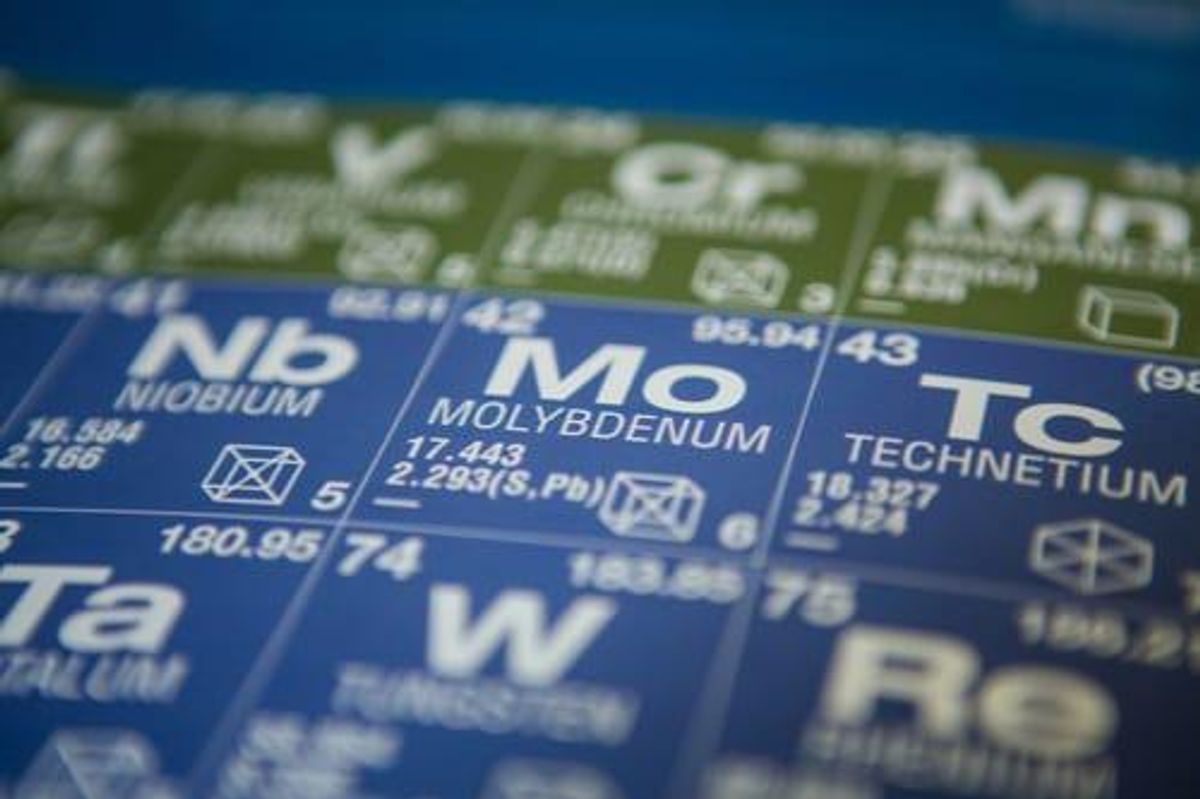Molybdenum Market Forecast: Top Trends That Will Affect Molybdenum in 2023
Interested in molybdenum investing? Learn about the molybdenum forecast for 2023, as well as 2022's trends.

After remaining relatively flat in the first half of 2022, molybdenum prices took an upward turn in the year's final quarter.
About 80 percent of the molybdenum that is mined each year is used to make stainless steel, cast iron and superalloys. Strong demand from China paired with supply constraints supported prices in the last month of the year.
With 2023 now in full swing, investors interested in the industrial metal are wondering about the molybdenum outlook for next year. Here the Investing News Network (INN) looks back at the main trends in the sector and what’s ahead for molybdenum.
How did molybdenum perform in 2022?
At the end of 2021, analysts were expecting demand uncertainty and declining supply to support molybdenum prices in 2022.
During Q1, the market was impacted by fresh COVID-19 measures in China, the metal's top producer and consumer. Molybdenum prices also stagnated due to a slowdown in Chinese steel production as the country curbed output to reduce emissions.
“China’s ambitious emissions targets are expected to further weigh on steel output ahead, taking a toll on molybdenum prices in turn,” FocusEconomics analysts said back in March. “Moreover, muted industrial production, pandemic-related uncertainty and fears over the health of China’s property market all cloud the outlook.”
The beginning of the second half of 2022 saw prices correct as the market was impacted by weaker demand and potential supply disruptions due to COVID-19 and the ongoing Russia-Ukraine war.
“China’s emissions targets will continue weighing on steel output, while global demand will cool due to a deteriorating economic panorama,” states a FocusEconomics report from July, when prices were averaging US$39,860 per metric ton (MT).
By August, prices had reached their lowest level, averaging around US$33,365. However, molybdenum took a turn in the last quarter, jumping over 50 percent between November and December. The metal ended the year trading above US$46,000.
In terms of supply and demand, the latest figures from the International Molybdenum Association show that the global molybdenum production came in at 142.4 million pounds in Q3 2022, a 1 percent decline compared to the previous quarter and a 2 percent fall compared to the third quarter of 2021.
Meanwhile, global use of molybdenum in Q3 2022 reached 160.4 million pounds, a 10 percent increase year-on-year.
What factors will move the molybdenum market in 2023?
It's important for molybdenum investors to remember that the market is driven by what happens in the steel and oil and gas sectors, with the latter being a traditional consumer of high-molybdenum steel for pipelines.
If demand is driven by steel and oil and gas, output on the other hand is dictated by what happens in copper, as more than 80 percent of molybdenum production comes from copper mines.
It should come as no surprise then that China is the world’s top molybdenum-producing country, putting out a total of 130,000 MT in 2021, according to the US Geological Survey. In a distant second place is Chile, which produced 51,000 MT that year and is the leading molybdenum-producing country in Latin America.
Even though these particular aspects of the molybdenum market make it difficult to make forecasts, there are some trends that the sector will continue to see moving forward.
“The molybdenum market is in a bit of a crisis at the moment,” Martin Jackson of CRU Group told INN. “Chinese demand has grown fairly strongly in the previous couple of years, but that investment pipeline has dwindled.”
In terms of supply, the analyst said mine output from the Americas is not expected to recover quickly, and several of the major by-product projects have seen delays in their commissioning.
All in all, CRU is expecting a demand deficit of 6 percent in 2023 based on flagging mine supply from the Americas and very strong demand from China. “We expected large price rises as a result, but the extent of this has still managed to surprise,” Jackson said.
According to CRU data, European and Asian oxide prices rose roughly 30 percent month-on-month in December, and prices are up over 20 percent since January 2022. “We’ve heard of cargoes struggling to find insurance, which is hurting availability,” Jackson said. “The last time prices were in this range was the first half of 2008.”
Meanwhile, FocusEconomics analysts see prices pulling back this year, but they should remain elevated by historical standards.
“The resilience of the global economy and the speed of the green energy transition are key factors to watch,” they said.
One trend investors should keep an eye out for is demand from the renewables sector. Molybdenum and copper are used in more than eight clean energy generation and storage technologies.
Molybdenum is a critical mineral required for a range of low-carbon technologies, especially wind and geothermal.
“The greatest share of demand for molybdenum from electricity generation and energy storage technologies comes from wind (47.3 percent) and geothermal (41.7 percent), with all the other generation and energy storage technologies together accounting for only a small share (11 percent),” according to a World Bank report.
Don’t forget to follow us @INN_Resource for real-time news updates!
Securities Disclosure: I, Priscila Barrera, hold no direct investment interest in any company mentioned in this article.
Editorial Disclosure: The Investing News Network does not guarantee the accuracy or thoroughness of the information reported in the interviews it conducts. The opinions expressed in these interviews do not reflect the opinions of the Investing News Network and do not constitute investment advice. All readers are encouraged to perform their own due diligence.
- Top 10 Aluminum-producing Countries ›
- How to Invest in Aluminum ›
- Top 10 Molybdenum Producers by Country ›
- How to Invest in Molybdenum ›
- 5 Major Molybdenum Uses ›
